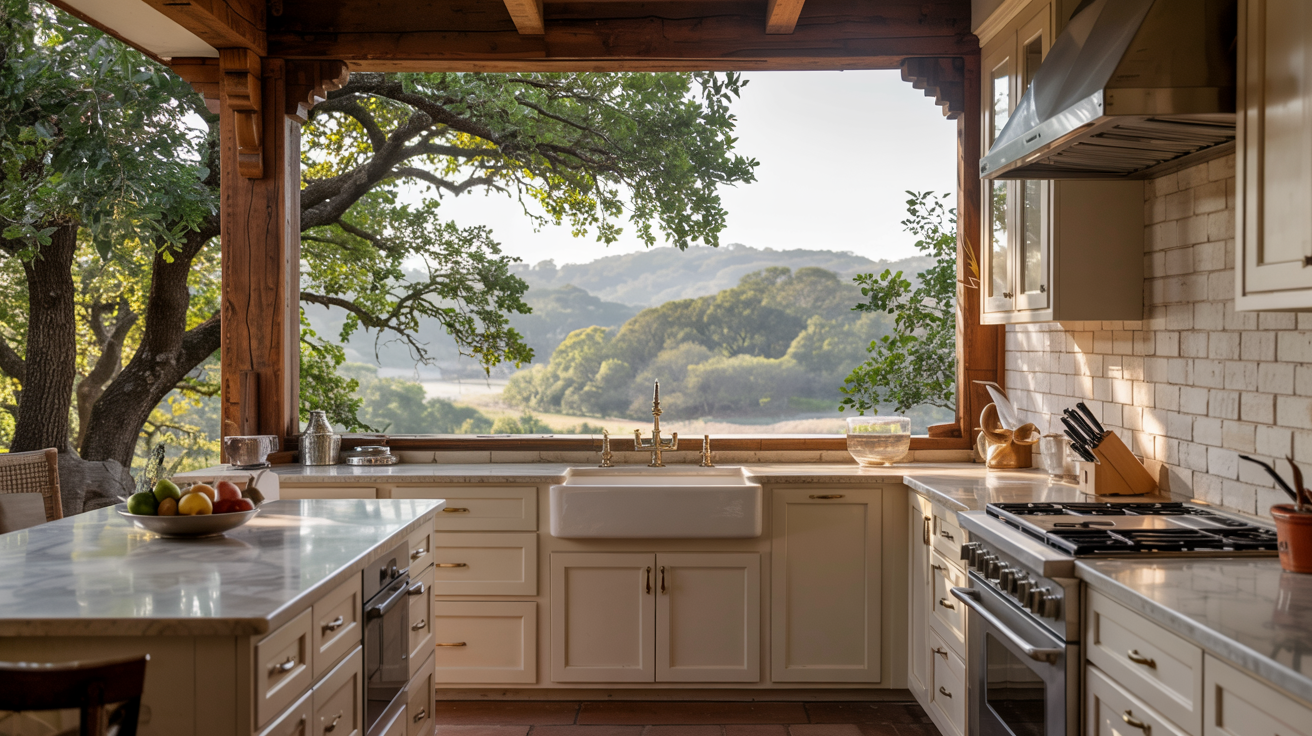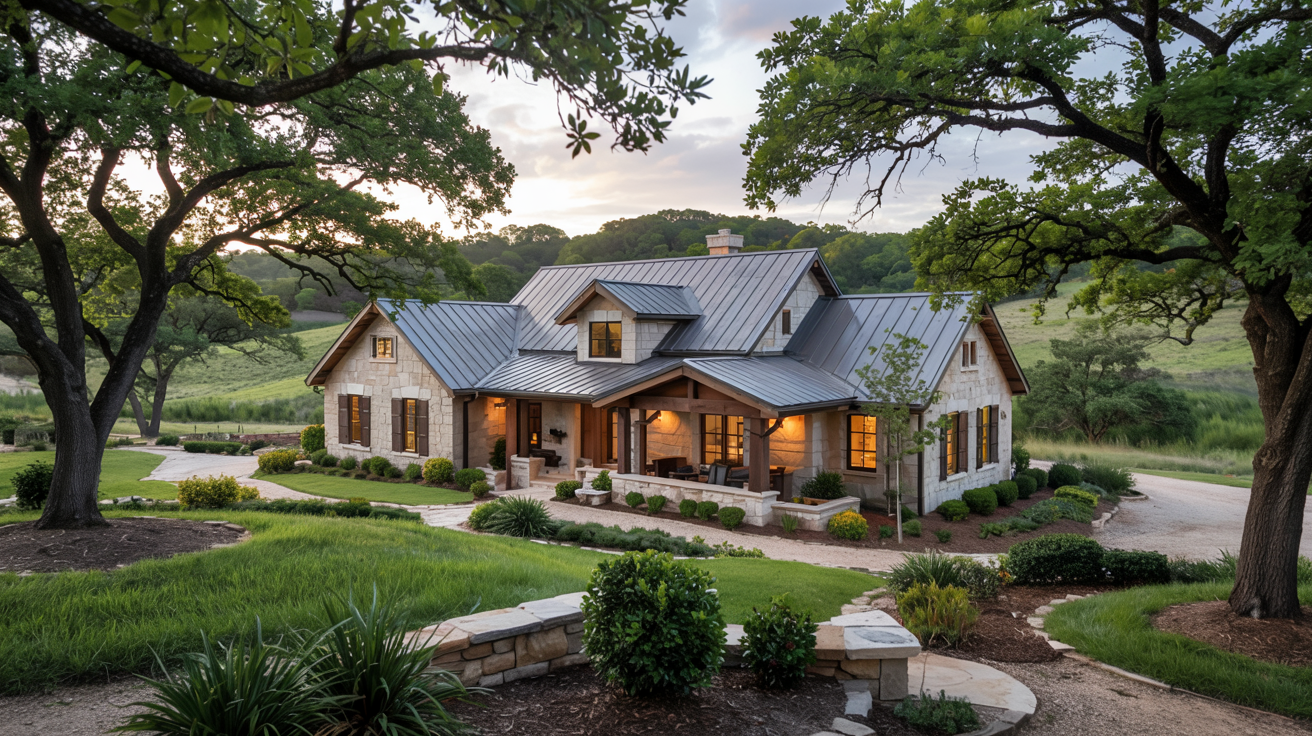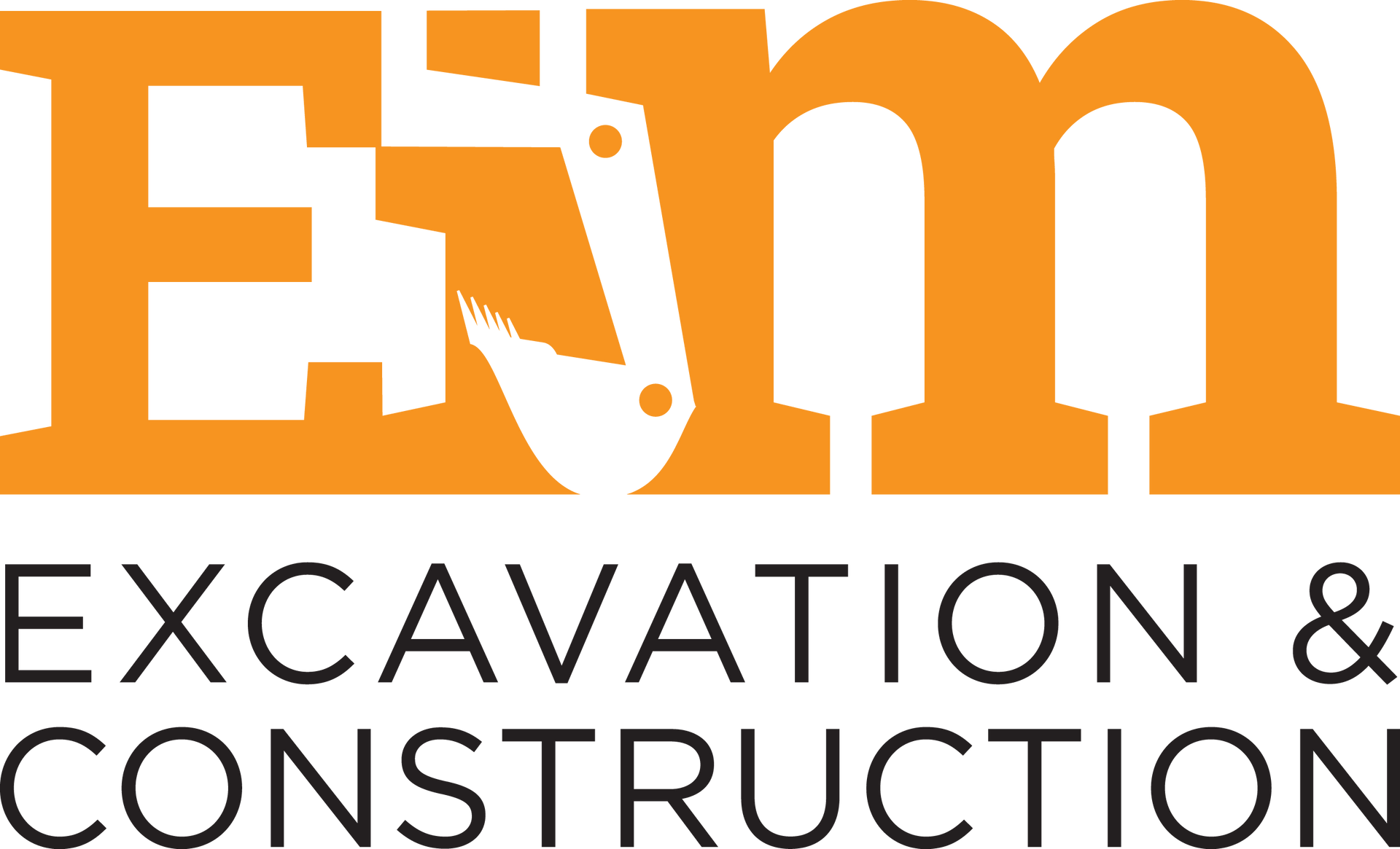Channel Drain Installation Guide for Texas Properties
Why Every Property in Texas Needs a Channel Drain System
A channel drain can be the difference between a flooded driveway and a dry, functional property when Austin's notorious flash floods hit. After 20 years in construction and founding Earth in Motion back in 2005, I've seen too many homeowners learn this lesson the hard way. The good news is that installing the right drainage system doesn't have to be complicated or break the bank when you understand what you're working with.
Let me share what I've learned about these linear drainage solutions from working on projects across Texas and Colorado. Whether you're dealing with pooling water around your pool deck or watching rainwater cascade down your driveway like a river, a properly installed channel drain system will solve your water management problems for decades to come.
Understanding How Channel Drain Systems Really Work
Think of a channel drain as a long, narrow gutter that sits flush with your concrete or pavement surface. Unlike traditional point drains that collect water in one spot, these systems capture runoff along their entire length. Water flows through the grated top, travels along the sloped channel underneath, and exits through an outlet that connects to your existing drainage system.
The beauty of this design lies in its simplicity. Gravity does all the work, but only if you get the installation details right. I've seen too many DIY attempts fail because folks underestimate the importance of proper slope and solid concrete work.
The Key Components That Make It Work
Every effective channel drain system has four essential parts:
- The channel body - Usually made from high-density polyethylene or polypropylene, this U-shaped trough carries the water
- The grate - Your choice of plastic, galvanized steel, or decorative metal that allows water in while keeping debris out
- End caps and outlets - These connect your system to existing drainage pipes
- Proper bedding and backfill - The concrete foundation that keeps everything stable
When I'm working on projects in Austin, I always explain to clients that the grate is what they'll see every day, but the concrete work underneath is what determines whether their system lasts five years or fifty years.
Choosing the Right Channel Drain for Your Specific Needs
Not all drainage situations are created equal. The system that works perfectly for a residential patio in Colorado might fail miserably on a commercial loading dock in Texas. Load rating becomes your first consideration.
Understanding Load Classifications
Here's how I explain load ratings to my clients:
- Class A (Pedestrian areas) - Perfect for walkways, patios, and pool decks where only foot traffic occurs
- Class B (Light vehicles) - Handles cars, pickup trucks, and light delivery vehicles on residential driveways
- Class C and above (Heavy duty) - Required for commercial applications with larger trucks and equipment
I've installed channel drains that handle everything from golf carts at country clubs to delivery trucks at retail centers. The key is matching your system's capabilities to your actual needs, not oversizing just to be safe.
Material Selection Based on Environment
Texas heat and Colorado freeze-thaw cycles taught me that material selection matters more than most people realize. Modern polymer channels resist UV damage and temperature cycling better than concrete alternatives. They're also significantly lighter, which makes installation easier and reduces the concrete requirements.
For grates, I typically recommend galvanized steel for vehicular applications and decorative options for residential areas where aesthetics matter. The non-slip textured surfaces also meet ADA compliance requirements, which becomes important for any commercial work.
Installation Techniques That Ensure Long-Term Success
Here's where my military background and two decades of hands-on experience really show. Proper installation isn't just about following manufacturer instructions – it's about understanding how water behaves and how concrete works in different conditions.
Critical Slope Requirements
Every channel drain needs slope to function, period. I use a minimum fall of one inch for every eight feet of channel length, though I prefer slightly more aggressive slopes when site conditions allow. This ensures water moves efficiently toward the outlet even when debris partially blocks the flow.
The biggest mistake I see DIY installers make is trying to level everything perfectly. Water won't flow uphill, no matter how nice your installation looks.
Excavation and Concrete Work
The trench needs to accommodate not just the channel height, but also proper bedding underneath and adequate concrete on all sides. I typically excavate 6-8 inches wider than the channel and ensure at least 4 inches of concrete bedding for stability.
Here's my step-by-step approach:
- Mark and cut existing surfaces carefully to minimize damage
- Excavate to proper depth with consideration for frost line in colder climates
- Install and level the channel sections with proper fall toward outlets
- Connect to existing drainage systems using compatible fittings
- Pour concrete in lifts to prevent channel movement
- Finish surfaces to match existing hardscape
The concrete work separates professional installations from amateur attempts. I've repaired too many failed DIY projects where inadequate concrete support caused channels to shift or crack.
Connecting to Your Existing Drainage Infrastructure
Most channel drain projects connect to existing 4-inch drain lines, but I always verify capacity before finalizing any design. Adding significant drainage area to an already stressed system just moves your water problems downstream.
Outlet Design and Water Management
The outlet connection might seem straightforward, but it's actually where many installations fail. Proper pipe connections require compatible fittings, adequate fall to the main line, and often some form of backflow prevention.
On projects around Austin, I frequently encounter situations where existing drainage systems weren't designed for the additional flow from new hardscape areas. Sometimes this means upgrading downstream components or adding retention features to manage peak flows.
Integration with Landscape Design
Channel drains don't have to be purely functional. Modern systems offer decorative grate options that complement your hardscape design while maintaining their drainage performance. I've installed systems with wave patterns, geometric designs, and even custom finishes that blend seamlessly with surrounding materials.
The key is planning the drainage system during the design phase, not trying to retrofit it afterward. When I'm working on custom pond projects, for example, I always consider how surface drainage will integrate with the overall water management strategy.
Maintenance and Long-Term Performance
One reason I prefer modern polymer channel systems over concrete alternatives is their maintenance profile. Properly installed systems require minimal ongoing attention beyond keeping grates clear of debris.
Preventing Common Problems
The most common issue I encounter with existing channel drains is debris accumulation. Leaves, sediment, and other materials gradually reduce flow capacity if not removed regularly. I recommend quarterly cleaning for most residential applications and monthly attention during heavy leaf-fall seasons.
Grate damage from vehicles is another frequent problem, especially when channels are installed too high relative to the surrounding surface. This is why I always recess vehicular-rated systems slightly below grade during installation.
Seasonal Considerations for Texas and Colorado
Working in different climates taught me that seasonal maintenance requirements vary significantly. Colorado installations need attention before and after freeze-thaw cycles, while Texas systems face different challenges from intense summer heat and sudden storm events.
The UV-resistant materials in modern channel systems handle these environmental stresses much better than older concrete or metal alternatives. I've seen polymer channels maintain their structural integrity and appearance for decades with minimal care.
When to Call a Professional vs DIY Installation
I get asked this question constantly, and my answer depends on three factors: your concrete experience, the complexity of connections to existing systems, and the consequences of failure.
DIY-Friendly Scenarios
Simple residential applications with straightforward connections can often be DIY projects if you have concrete experience. This might include pool deck drainage or patio applications where the outlet connects to an accessible drain line.
However, I always recommend having a professional at least review your plan and verify the connections to existing drainage systems. A small consultation fee can prevent expensive mistakes.
Professional Installation Requirements
Complex projects involving load-bearing applications, integration with existing hardscape, or challenging site conditions benefit from professional installation. This includes most driveway applications, commercial work, and any situation where failure could cause property damage.
My certification as a Service-Disabled Veteran-Owned Small Business also means I can work on government and institutional projects that require specific contractor qualifications.
Cost Factors and Investment Considerations
The investment required for channel drain installation depends on several key factors that I discuss with every client during the planning phase.
Primary Cost Drivers
Material costs scale directly with system length and load rating requirements. Residential pedestrian-rated systems cost significantly less than heavy-duty vehicular applications. Site preparation complexity often represents the largest variable in total project investment.
Existing concrete removal, utility relocation, and difficult access can significantly impact labor requirements. I always conduct thorough site evaluations to identify potential complications before providing project estimates.
Long-Term Value Proposition
Properly installed channel drains provide decades of reliable service with minimal maintenance requirements. When I compare this to the ongoing costs of water damage repairs or repeated attempts to solve drainage problems with temporary solutions, the investment makes clear financial sense.
Property protection represents the real value. I've seen foundation damage, landscape erosion, and hardscape deterioration that cost far more to repair than proper drainage would have cost to install initially.
Regional Considerations for Texas and Colorado Projects
My experience working across different climates taught me that regional factors significantly influence both design and installation approaches.
Texas-Specific Challenges
Austin's clay soils and intense rainfall events require special attention to thermal expansion and peak flow management. The rapid temperature changes during storm events can stress poorly designed systems.
I've also learned to account for the aggressive nature of Texas storms. What might be adequate drainage capacity in other regions often proves insufficient when facing the intensity and duration of our summer thunderstorms.
Why Earth in Motion's Approach Makes the Difference
After founding Earth in Motion in 2005 and working on hundreds of drainage projects, I've developed installation techniques that address the real-world challenges other contractors often overlook.
My military background instilled attention to detail and systematic approaches that ensure every installation meets long-term performance standards. When I take on a project, clients get the benefit of two decades of problem-solving experience and a commitment to solutions that actually work.
Whether you're dealing with a simple patio drainage issue or complex commercial water management requirements, the principles remain the same: proper design, quality materials, and installation techniques that account for real-world conditions.
If you're considering a drainage solution for your property in Austin or anywhere across Texas and Colorado, don't let water problems damage your investment when a properly designed and installed channel drain system can solve them permanently.
Frequently Asked Questions About Channel Drain Installation
What makes a channel drain system more effective than other drainage solutions?
Channel drains excel because they capture water along their entire length rather than at single points like traditional drains. After 20 years installing drainage systems across Texas and Colorado, I've seen how this linear collection method prevents the pooling and overflow issues that plague other approaches. At Earth in Motion, we design these systems to handle Austin's intense flash floods and Colorado's rapid snow melt by creating a continuous pathway for water evacuation. The gravity-fed design means no moving parts to fail, and when properly installed with correct slope and concrete work, these systems provide decades of reliable performance.
How do I know what load rating my channel drain system needs?
Load rating depends entirely on what will pass over your drain system. For residential patios and walkways where only foot traffic occurs, Class A pedestrian-rated systems provide adequate strength. Driveways handling cars and light trucks require Class B ratings, while commercial applications with delivery vehicles need Class C or higher ratings. I always evaluate the actual usage patterns during my site assessments because undersizing leads to cracked grates and system failure. The investment difference between load classes is minimal compared to replacement costs, so I ensure every Earth in Motion installation matches your specific traffic requirements.
Can channel drains connect to my existing drainage system?
Most channel drain installations can integrate with existing 4-inch drain lines, but I always verify system capacity before finalizing any design. Adding significant drainage area to an already stressed system just relocates your water problems downstream. During my site evaluations across Austin, I frequently encounter situations where existing infrastructure needs upgrading to handle additional flow from new hardscape areas. At Earth in Motion, we analyze your entire drainage network to ensure the new system enhances rather than overwhelms your current setup, sometimes incorporating retention features to manage peak flows effectively.
What factors influence the cost of channel drain installation?
Several key factors drive installation investment, starting with system length and load rating requirements. Site preparation complexity often represents the largest variable - existing concrete removal, utility relocation, and difficult access significantly impact labor requirements. Material selection between basic polymer channels and heavy-duty options affects costs, as does grate choice from standard plastic to decorative metals. Connection complexity to existing drainage systems, excavation depth requirements, and local soil conditions all influence the final investment. I conduct thorough site evaluations for every Earth in Motion project to identify potential complications and provide accurate estimates that account for your specific conditions.
Should I attempt DIY installation or hire a professional?
The decision depends on your concrete experience, connection complexity, and failure consequences. Simple residential applications with straightforward connections might be DIY-friendly if you have solid concrete skills, but the excavation, proper slope establishment, and concrete work separate successful installations from costly failures. I've repaired too many DIY attempts where inadequate concrete support caused channels to shift or crack. At Earth in Motion, we handle the technical aspects that ensure long-term performance - proper bedding, precise slope calculations, secure connections to existing systems, and concrete work that withstands Texas heat and Colorado freeze-thaw cycles. Professional installation provides decades of reliable service rather than potential water damage from system failure.



